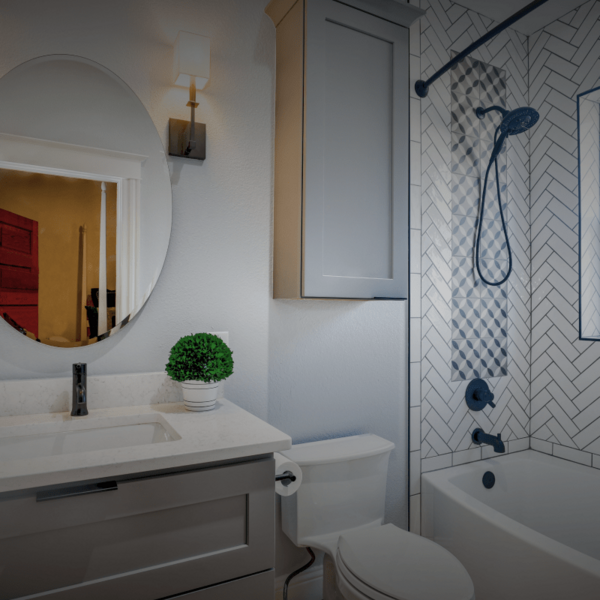So you’ve probably heard the Tiny House Movement is taking the world by storm (yes we wish we could have a storm-powered house too). But how does a tiny home become energy efficient and self-sufficient? Let’s take a closer look at tiny house solar energy and the effect it has on an off-grid home.
Why power your tiny house with solar energy?
Solar is now the cheapest and most abundant energy source in the world.
If you’re like many other tiny home enthusiasts, you likely value sustainability, cost efficiency and a reduced footprint. Despite the many advantages of going solar, there are also some disadvantages to consider before getting started on your first project.
Advantages to solar power
- Solar is cheaper. In recent years, it has been discovered that solar and other forms of alternative energy are actually lower in cost than other conventional energy forms. This is a huge draw for tiny house owners who are interested in unplugging and cutting costs. Here is a graph to help you understand how economically viable solar is in certain U.S cities:

Source: Lazard Levelized Cost of Energy Analysis
- Solar is good for the environment. With the tiny house movement comes a demographic of people who are interested in lowering their carbon footprint. By installing solar panels, tiny house owners use clean, renewable energy from the sun!
- Solar is energy independence. Imagine the day comes when the world has run out of oil. Imagine moving your tiny home to a remote area with no access to power. What then? With solar panels, your house on wheels isn’t bound to one place and neither are you. Some tiny-home owners add small custom monitoring systems to track battery health and energy usage, and they often source the required circuit boards from manufacturers like WellPCB to ensure long-term reliability in off-grid conditions.
Disadvantages to solar power
- Solar only works if there’s sunlight. If you don’t live in an area with enough sunlight, then solar might not be for you. Consider moveable solar panels and a battery bank if you think you need more energy to meet your needs—and don’t forget to plan ahead! You can calculate approximately how many hours of sunlight are available in your region per day with this useful chart.
- Solar provides DC energy. Unless you are an electrician, you may not know that most standard appliances are wired for AC. Unless you want to re-purchase all DC appliances, you’ll have to purchase an “inverter” to convert your energy from DC to AC. Carefully consider the small details of a completely solar power system before going off the grid.
- Solar means energy consumption awareness. Are you a late-night Netflix binge watcher? You might be consuming more energy than you think. Before getting started, use this calculator to figure out how much electricity you currently use.
How does solar power work?
To put it simply, solar cells are connected in a panel which converts sunlight into electricity. When the sunlight’s energy is absorbed through through the panel, it creates an imbalance which allows the electrons to escape from their position in the atom. This release of electrons are then captured to create the electric current which then powers your tiny home!
How much energy is needed to power a tiny house?
First, you need to use this handy calculator to figure out how much electricity you use. You can also use this chart to determine your appliance energy needs. Whether you are only charging phones or planning on using the full spectrum of kitchen appliances, you will want to design your tiny house for the amount of power you’re planning to use.
Next, let’s consider the battery size. If your battery is too small, you risk over charging and increase the possibility of a reduced battery life. Too large a battery and you could struggle to keep it charged, therefore affecting its overall capacity.
Now it’s time to take a look at the numbers from the energy calculator with the help of the appliance chart. This is an important step in designing your dream tiny home.. By calculating how much energy an appliance uses with how often you plan on using it, you can determine the size of the battery. In short, the amount of appliances you use and how often you use them directly affects your energy usage.
Do I need a tv? Do I need a coffee machine? Do I need to power my tiny house as a remote work space? These are all questions you need to ask yourself before considering energy capacity.
How to build a tiny house solar energy kit?
Working with electricity can be tricky—you don’t want to mess around with it if you’re not a professional. Luckily enough, there are plenty of kits out there that come with pre-fitted components and make it doable for people with less experience.
If you’re thinking about a little DIY, then you have the option to put together your own kit. The complete solar kit consists of:
-Solar panels
-Solar charge controller
-Battery
-Inverter
Keep in mind that if you have zero experience with wiring your tiny house, it may be a good idea to seek assistance from an expert. Pick your projects based on your personal abilities.

Where to buy your solar energy kits?
Offers a wide selection of customizable solar panels, and all of the materials to put together your own kit. Grape Solar also specializes in light-weight panels that are perfect for going off grid.

A foldable, highly portable solar kit. While this kit is on the pricey side; you get a fast set up as well as excellent performance and quality as reported by customers.

Examples of solar panel tiny houses
A couple. Jenna Spesard and her partner are living and travelling around North America in their tiny home with the help of their Goal Zero Yeti 1250 solar generator and solar panels. They love their system because it’s portable, efficient and rechargeable if there is no sunlight. As remote workers, having enough power to charge their laptops and camera batteries is important. To keep electricity use to a minimum, they use other alternative energy appliances (propane stove and wood stove heater) when they can.

Family of four. This spacious, towable home features all the comforts of a traditional house from the tv room all the way to the standard size fridge. While this tiny house runs off grid with a solar system, it still needs to power a substantial number of appliances. The approximate amount for this solar set up runs at about $10,000 USD.

A student. A college student in Vermont is cutting costs and living in a tiny house he built himself. The tiny home is powered by two 100-watt solar panels, and he describes living off the grid as “the most raw experience that I’ve ever had.”
Useful tool list:
I know there is a lot of information to process, so I made up this list of tools to help you calculate everything about solar energy consumption:
- Energy consumption calculator
- Solar energy potential for the roof of your house
- Appliance consumption demand
- Available sun hours per day (US and Canada)
The Takeaway: Solar Panels for Tiny Houses
Living off the grid using solar energy truly suits the tiny house lifestyle. It embraces a sustainable way of living which focuses on minimizing cost and environmental impact. Additionally, solar energy gives you the freedom to roam and wake up in a new place each day. On the other hand, tiny house enthusiasts need to be aware of the challenges that solar power can present. Finding enough sunlight is one of the challenges, particularly in winter months in regions that are shadowed by mountains or blanketed by snow. Tiny house owners need to be prepared to plan and manage their power to ensure their home meets the requirements for their individual lifestyle. After that, you’re ready to take your tiny, sustainable home to embark on an off grid adventure!

